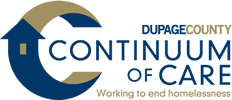The Illinois Department of Human Services, Division of Mental Health is preparing to launch the 988 Suicide & Crisis Lifeline across the state of Illinois. And there is tremendous need, given:
- For people ages 10–34, suicide is a leading cause of death.
- From April 2020 through April 2021, over 100,000 people died from drug overdoses.
- An overall increase in stress and uncertainty arising from worldwide conflict and tension, incidents of gun violence & mass shootings, the COVID-19 pandemic, and other trauma affects Illinoisans across our state.
- In 2020, the U.S. had one death by suicide every 11 minutes.
On July 16, 2022, the State of Illinois is activating 988, the existing National Suicide Prevention Lifeline, where compassionate, accessible care and support are available for anyone experiencing mental health–related distress.
988 is the new three-digit number for calls, available in multiple languages. People can dial 988 if they are having thoughts of suicide, mental health or substance use crises, or any other kind of emotional distress. People can also dial 988 if they are worried about a loved one who may need crisis support.
The Lifeline works! Since the Lifeline began in 2005, it has served as an invaluable resource, helping thousands of people overcome suicidal crisis or mental health-related distress every day. With the transition to 988, these life-saving services will be even easier to reach.
- In preparation for the transition of the Lifeline to 988, the federal government and partners from across many industries in the public and private sectors are working together to provide guidance and resources to make our work a little easier.
- The National Action Alliance for Suicide Prevention and its messaging task force developed the 988 Messaging Framework to provide guidance on developing 988-related messaging. We encourage you to closely review these guidelines. The framework provides strategies related to the timing of messaging before and after the transition to 988 in July. It also discusses the importance of understanding how 988 works locally, following communication best practices, and tailoring 988-related messages for specific audiences.
- The Substance Abuse and Mental Health Services Administration (SAMHSA) created a one-stop shop, the 988 Partner Toolkit, at 988 Partner Toolkit | SAMHSA . The toolkit is intended for SAMHSA’s 988 implementation partners—including crisis call centers, state mental health programs, substance use treatment providers, behavioral health systems, and others—and provides key messages, FAQs, logo and brand guidelines and more information about 988. SAMHSA will add social media posts, wallet cards, magnets, and other materials about 988 to the toolkit over time.
- SAMHSA has worked with partners across several critical industries to create a holistic view of readiness for the implementation of 988 for states, territories, tribes, crisis contact centers, public safety answering points (PSAPs) and behavioral health providers. Through these collaborative efforts, SAMHSA has created guidance documents (e.g., “playbooks”) for these critical groups to support implementation of 988.
Below are additional resources including an Illinois specific sheet as well as the fact sheets developed by SAMHSA in both English and Spanish:
Illinois Specific Fact Sheet (PDF)
988 Fact Sheet English (PDF)
988 Fact Sheet Spanish (PDF)
